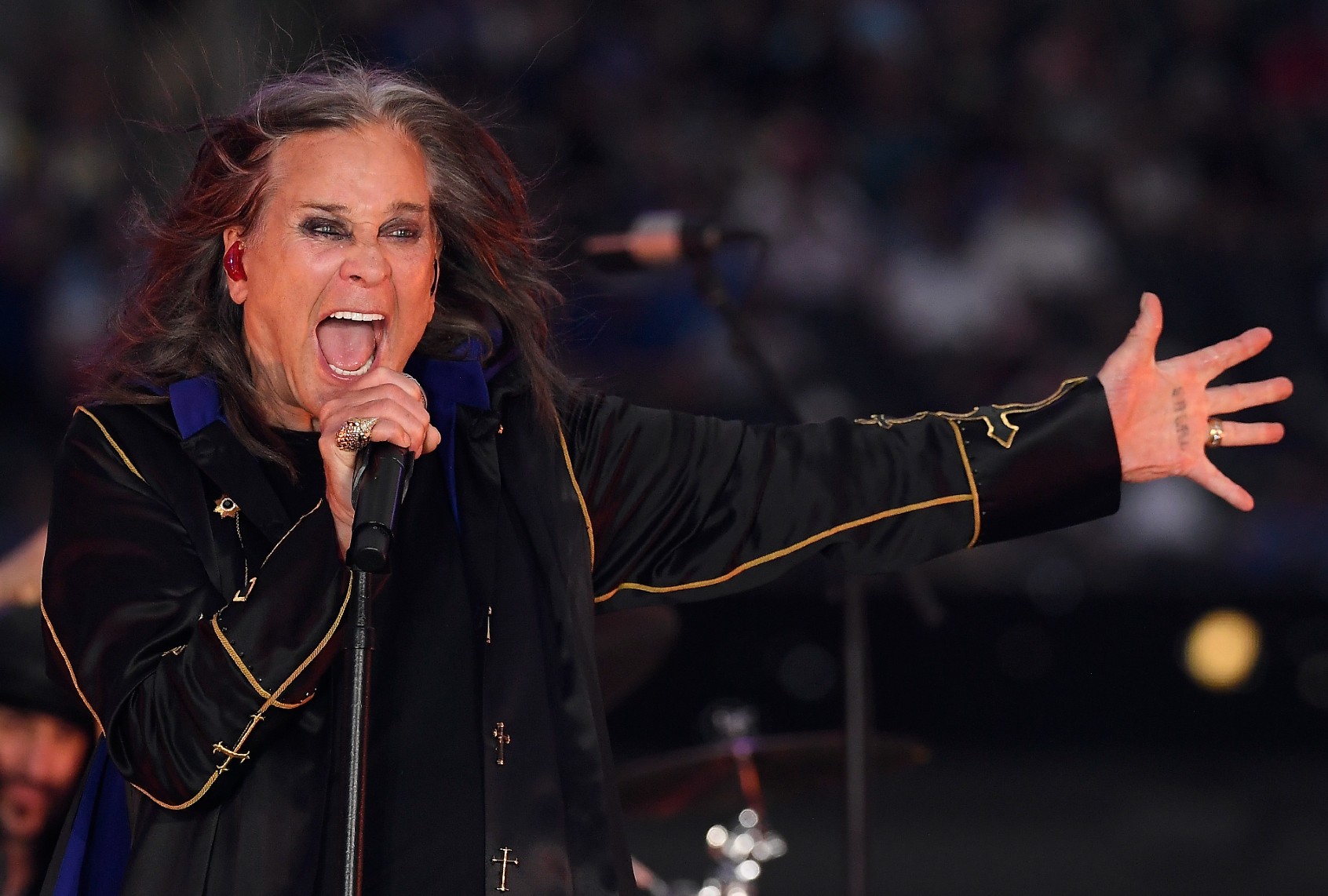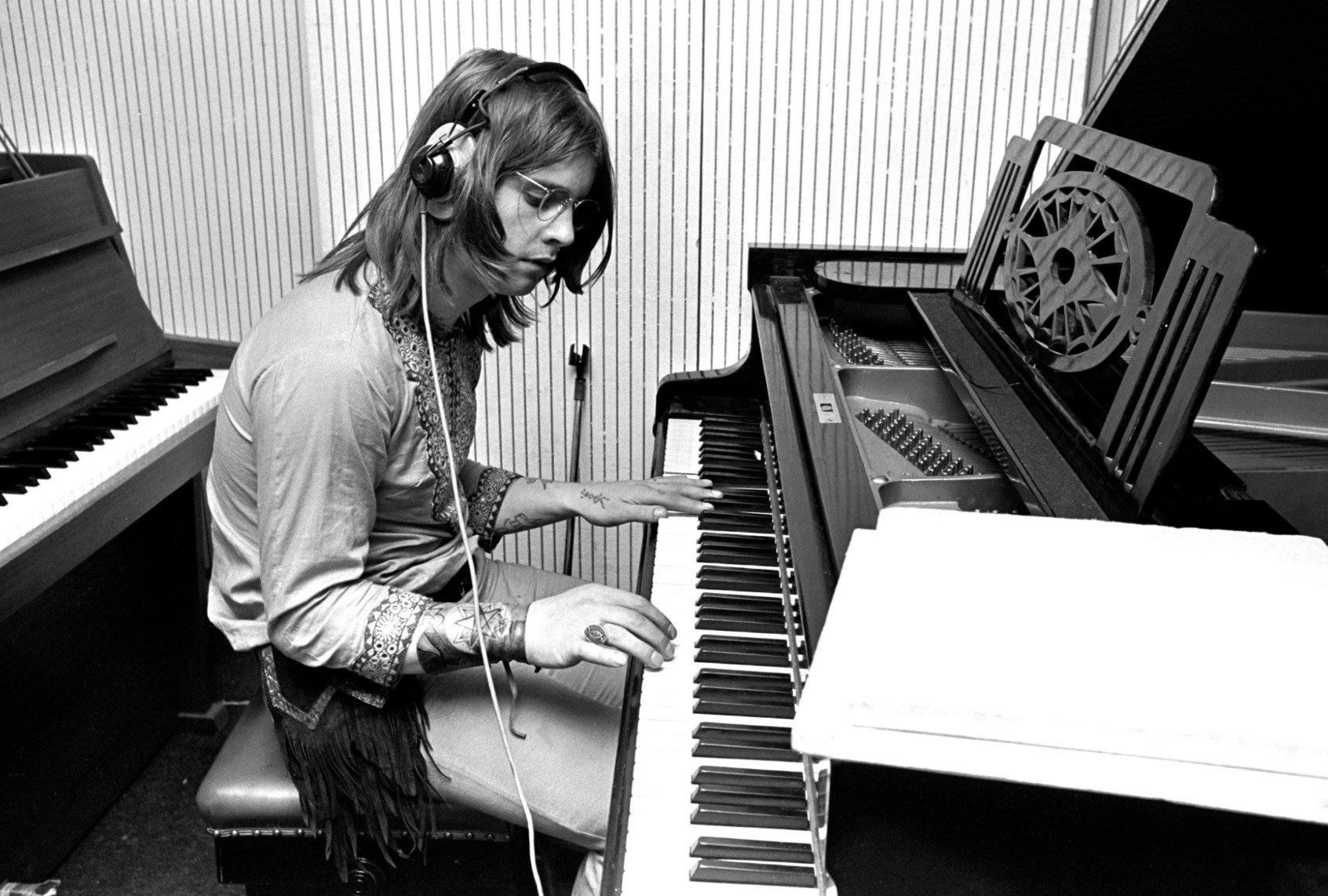In recent years, Ozzy Osbourne had to cancel multiple proposed concerts and tours due to a litany of health issues. But he kept trying to get well enough to get back onstage for the sake of his loyal fans.
“That’s one of the things I’ve been the most f**king pissed off at: I never got the chance to say goodbye or thank you,” the Black Sabbath vocalist-turned-solo-star told Rolling Stone UK in 2023. “Because my fans are what it’s all about.”
“If I can’t continue doing shows on a regular basis, I just want to be well enough to do one show where I can say, ‘Hi guys, thanks so much for my life,’” he added. “That’s what I’m working towards, and if I drop down dead at the end of it, I’ll die a happy man.”
It’s eerie reading this quote now because, as it turns out, that’s pretty close to what happened: Less than three weeks after headlining a banner farewell show in Birmingham dubbed Back to the Beginning, Osbourne died at the age of 76.
His death was genuinely shocking, as he had long lived with Parkinson’s disease, but seemed in stable health; in fact, just 10 days before he died, Osbourne appeared at Comic Con Midlands with his family. And at Back to the Beginning — an epic day celebrating Osbourne and Black Sabbath that drew a who’s-who of heavy music, including Guns n’ Roses, Metallica, Slayer and Tool — he was in an animated mood and in fine vocal form.
The sheer number of artists who flew to Birmingham specifically for the show illustrated his incredible legacy and influence, and the respect he commanded from the heavy music universe. Heavy metal might have eventually come to exist without Ozzy, but it would’ve looked and sounded very different. Osbourne was the Thomas Edison of rock ‘n’ roll: a tireless sonic inventor who influenced the genre’s development across multiple offshoots. The mainstream hard rockers and hair bands of the 1980s certainly wouldn’t exist without Osbourne, but neither would more niche offshoots, like stoner rock, thrash metal, death metal and doom metal. He helped create a blueprint for heavy music that was thoughtful and immersive as well as aggressive.
Heavy metal might have eventually come to exist without Ozzy, but it would’ve looked and sounded very different.
In the 1970s, Black Sabbath prioritized gouging grooves, thrumming basslines and ponderous drums; they treated their albums like cohesive sonic statements. At the helm was Osbourne, who channeled the darker forces within this music with hypnotic wild-child abandon, as if he were possessed by the hellfire spirit. And musically, Black Sabbath was genuinely terrifying: The ponderous song “Black Sabbath,” which opened the band’s self-titled 1970 debut LP, felt like it was barely escaping the fires of hell, between the ominous tolling bells and spacious arrangements that exuded dread.
“Paranoid,” the band’s second LP of 1970, was even better: a deliberately disorienting slab of viscous proto-punk (the title track) and roaring stoner rock sludge (“Iron Man”). Yet the band continually refined its approach. On their 1973 album “Sabbath Bloody Sabbath,” the synth-heavy “Who Are You?” incorporated elements of prog and space rock, while the title track was a punchier take on their sprawling epics.
Despite these obvious innovations, critics were not fans. “I don’t think we ever had a good review,” Osbourne told The Guardian earlier this year. “Maybe that was a catalyst in a way: every critic didn’t like us, so more of the people liked us. We were a people’s band: four guys from Aston, one of the poorest parts of Birmingham.”
Start your day with essential news from Salon.
Sign up for our free morning newsletter, Crash Course.
That upbringing made him an inclusionary presence, as well as someone who never feared going against the grain. For starters, Osbourne’s voice was distinctive. He lacked the abrasiveness or gruffness found in many metal singers, opting instead for a theatrical melodic yowl with silvery overtones. On Black Sabbath’s 1975 LP “Sabotage,” his voice even possessed a soulful tone. Credit for this no doubt goes at least partly to his unabashed, life-long love of The Beatles. “I absolutely worshiped The Beatles,” he told Rolling Stone in 2002. “Steve Jones of the Sex Pistols once said to me, ‘I hated The Beatles.’ To me, that’s like saying you hate air.” In 2005, he even honored his heroes with a reverent version of “In My Life.”
On Black Sabbath’s 1975 LP “Sabotage,” his voice even possessed a soulful tone. Credit for this no doubt goes at least partly to his unabashed, life-long love of The Beatles.
Tom Morello also once described Osbourne’s voice as the sound of “the no-hope working class driving a stake through the heart of the flower power generation.” That potent yearning never fully dissipated; Osbourne always sounded like a seeker, something constantly in search of meaning. This became even more prominent when he launched a solo career after parting ways with Black Sabbath in 1979. His first two solo albums, 1980’s “Blizzard of Ozz” and 1981’s “Diary Of a Madman” harnessed his untamed persona into classic singles “Crazy Train,” “Mr. Crowley” and “Flying High Again.” While no less ominous than his work with Black Sabbath, they possessed a commercial edge that led to mainstream success.
Prior to Osbourne’s solo success, hard rock and metal artists typically stuck together in bands. But Ozzy created a blueprint for a solo heavy metal rockstar, proving that you could carry this music on your own if you had a solid team around you. And Osbourne always flourished when he had a guitarist foil, first Randy Rhoads and later players such as Jake E. Lee and Zakk Wylde. Their virtuosic playing challenged Ozzy to amplify his stage presence.

(Kevork Djansezian/Getty Images) Ozzy Osbourne performs during half-time of the NFL game between the Los Angeles Rams and the Buffalo Bills at SoFi Stadium on September 08, 2022 in Inglewood, California.
But for all of Osbourne’s consistency, he was never afraid to try new things, and he never discounted hard rock’s many evolutions. That was certainly evident with Ozzfest, his metal music festival that always made room for up-and-coming artists as well as legends. The production and sonics on his solo albums evolved gently with the times. As hard rock and heavy metal gained a mainstream foothold in America thanks to MTV, Osbourne leaned into poppier metal sounds on 1983’s “Bark at the Moon” and 1986’s “Shot In The Dark.”
By the early 1990s, when metal excess was at its peak, he emerged with the spiritual power ballad “Mama, I’m Coming Home” and the slick “No More Tears,” the latter kicking off with cavernous synthesizers. In the subsequent decades, he continued notching mainstream radio hits, embracing contemporary rock’s approach with “I Don’t Wanna Stop” or the Jeff Beck collaboration “Patient No. 9.”
Collaboration-wise, he was also open to things that, on paper, might seem unorthodox. In 1983, he contributed electroplated speak-sing vocals to the synthfunk jam “Shake Your Head (Let’s Go To Bed)” by Was (Not Was). (How did Osbourne end up on the track? “I was lamenting the fact that we didn’t have anybody to sing to our attorney, who we were meeting with,” he told me in 2024. “And he said, ‘Well, you know, Ozzy Osborne’s in town. I represent him. He’d be up for this.’”) At the height of nu-metal, Osbourne teamed up with Coal Chamber for an ominous 1999 cover of Peter Gabriel’s “Shock the Monkey.”
And in 2019, he had one of the biggest hits of his entire career when he contributed a vocal hook on rapper Post Malone’s moody top 10 single “Take What You Want.” The following year, the pair reunited on Osbourne’s album “Ordinary Man” for the throttling, Black Sabbath-esque throwback “It’s A Raid,” a paranoia-soaked true story of police showing up after Ozzy accidentally called them while in a drug-induced state.
In the hands of other artists, these side quests might sound self-conscious or embarrassing. But Osbourne was always himself: He wouldn’t—and, really, couldn’t—camouflage his voice for the sake of a collaboration. Instead, he sensed how he could work with these artists to create something new.
Just a few weeks ago at the Back to the Beginning concert, Osbourne relished what he had achieved in his decades-long career. As the sweeping “O Fortuna” movement of Carl Orff’s Carmina Burana thundered over the loudspeakers, he rose from underneath the stage while sitting on a badass, none-more-black throne decorated with skulls and a gigantic bat. “Let the madness begin!” he exclaimed.
That led into a five-song solo set that kicked off with “I Don’t Know” — appropriately enough, the first song on his 1980 debut solo album “Blizzard of Ozz” — and then segued right into the eerie, sinister “Mr. Crowley.” The nightcap was a Black Sabbath reunion featuring guitarist Tony Iommi, bassist Geezer Butler and drummer Bill Ward. The quartet had started playing as Black Sabbath in the late 1960s; this night marked their first appearance together in 20 years. And they delivered, with a seething set full of menace and vigor.
The significance of these childhood friends coming back home — and coming back home together — made their set downright poignant. “One of the proudest things I have in my heart is the fact that Black Sabbath wasn’t a band that was created by some big buff mogul guy,” Osbourne told the BBC in 2017. “It was four guys who said, ‘Let’s have a go, we have a dream.’ And it came true beyond our wildest expectations.”
In the end, Osbourne was never afraid to be vulnerable. Despite his well-publicized outrageous behaviors and drug addictions, The Prince of Darkness always had a tender heart and a soft side. The cathartic yowl at the start of his debut solo single, “Crazy Train,” was telling: “All aboooooardd!” Osbourne invited everyone into his dark lair — and was grateful to his very last day for the community.
Read more
about Ozzy Osbourne


